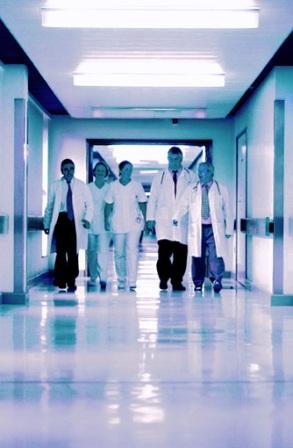

Printable PDF version
Subscribe to our newsletter
Healthcare Facilities
eMedicine
SB1953-Painful Medicine
Hospital
Costs
Construction
Management Specialists
111 Pine Street, Suite 1315
San Francisco, CA 94111
(415) 981-9430
www.TBDconsultants.com
Healthcare has been going through some dramatic transitions in the past couple of decades or more. What are these changes and how are they affecting the design and functioning of healthcare facilties? Click the link below to read the article.
Electronic storage and messaging is taking the world by storm, but how is it affecting the medical community. We look at how hospitals are introducing this technology, and how it is affecting the medical staff and the construction costs.
Senate Bill 1953 was enacted in 1994 with the goal of ensuring that hospitals remained standing and operational after a major earthquake.
Two of its four major deadlines have already passed. January 1, 2001 was the deadline for the evaluation and ranking of structures, and January 1, 2002 was the date for ensuring that mechanical and electrical systems had adequate bracing to support them during an earthquake.
But the two main dates are still in the future, but approaching fast:
- January 1, 2008 is when applicable buildings should not pose a risk of collapse in a major seismic event (although it is possible for an extension to be granted to January 1, 2013, and efforts are being made to legislate a further 7 year extension).
- January 1, 2030 is when applicable buildings are to be in substantial compliance with the Hospitals Facilities Seismic Safety Act.
These conditions apply to acute care hospital structures, and a compliance plan for these buildings was to be prepared and submitted by January 1, 2001, indicating the facility's intent to do any of the following:
- Building retrofit for compliance with these regulations for continued acute care operation beyond 2030;
- Partial retrofit for initial compliance, with closure or replacement expected by 2002, 2008 or 2030;
- Removal from acute care service with conversion to non-acute care health facility use; or
- No action, building to be closed, demolished, or replaced.
 This
dose of medicine has had some unexpected side effects though. The year SB 1956
was passed was also the year of the Northridge earthquake, and lessons from that,
and subsequent earthquakes, have taught engineers a lot more about how structures
are affected by seismic events, and has increased the cost of these upgrades.
Meanwhile, it has been estimated that about 36% of California's acute-care hospitals
have negative operating margins. Add to that the fact that OSHPOD (Office of Statewide
Health Planning and Development), that oversees these upgrades, has been suffering
from California's budget deficits, resulting in vacant positions not being filled,
and consequent leading to delays in project approvals. So hospitals are being
squeezed on the budget and the schedule, which can be critical when the next major
deadline in less than two years away, and a hospital construction project can
take three to five years to get going.
This
dose of medicine has had some unexpected side effects though. The year SB 1956
was passed was also the year of the Northridge earthquake, and lessons from that,
and subsequent earthquakes, have taught engineers a lot more about how structures
are affected by seismic events, and has increased the cost of these upgrades.
Meanwhile, it has been estimated that about 36% of California's acute-care hospitals
have negative operating margins. Add to that the fact that OSHPOD (Office of Statewide
Health Planning and Development), that oversees these upgrades, has been suffering
from California's budget deficits, resulting in vacant positions not being filled,
and consequent leading to delays in project approvals. So hospitals are being
squeezed on the budget and the schedule, which can be critical when the next major
deadline in less than two years away, and a hospital construction project can
take three to five years to get going.
There are a number of factors that affect the seismic upgrade cost of any building, and some of these factors are particularly applicable to acute care facilities. For instance, the cost of rehabilitating a building that is required to be immediately occupiable after an earthquake (as SB 1953 requires) can be double the cost of rehabilitating a similar building that was only required to protect the lives of occupants during an earthquake. Also, as with any renovation work, whether the building is vacant, partly occupied or fully occupied will have considerable cost impact, and there is normally not the opportunity to completely vacate an acute care facility during upgrade work, because alternative space is seldom available.
Hospital construction costs have been increasing at about twice the rate of general construction work. What are the issues driving hospital construction costs? We address these issues in this article.
Design consultant: Katie Levine of Vallance, Inc.